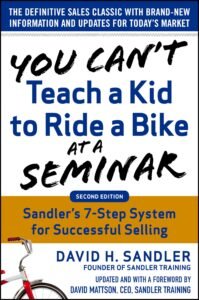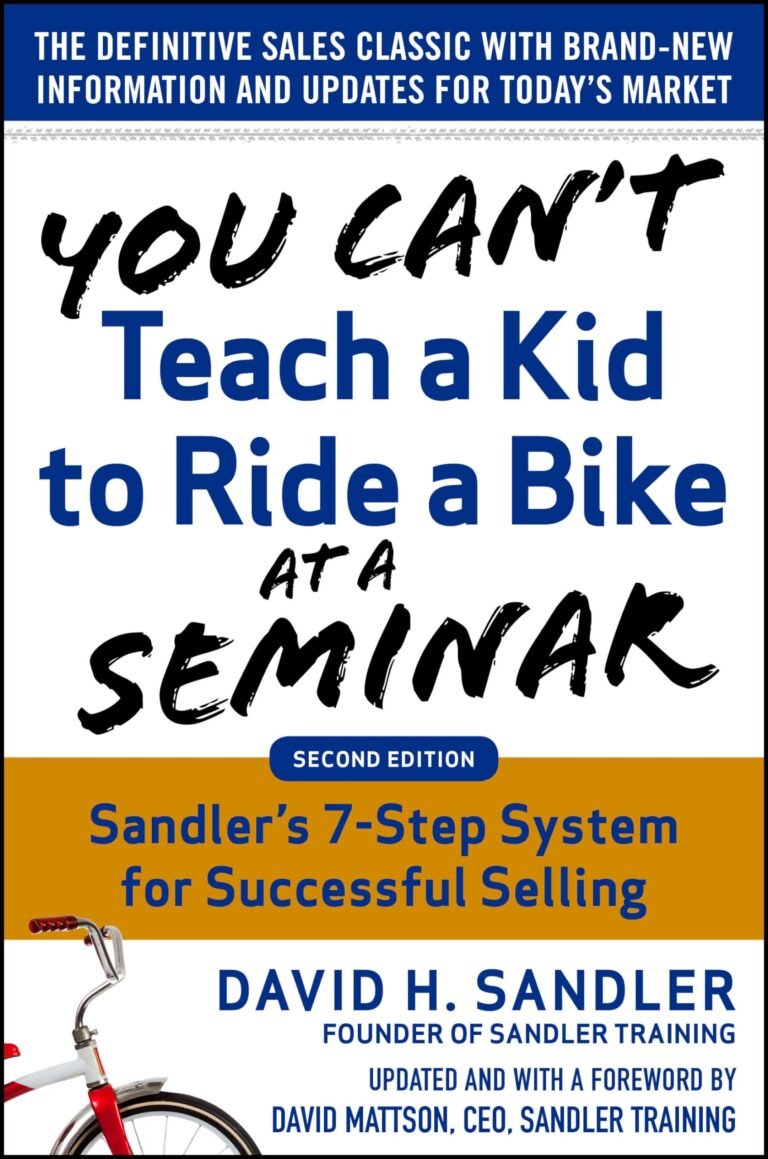
A Sales Book That Isn’t About Sales
David H. Sandler’s You Can’t Teach a Kid to Ride a Bike at a Seminar may have “sales” in the subtitle, but it’s really a book about human behavior.
It’s about why people say yes.
Why they trust.
Why they buy — and why they don’t.
At its core, this isn’t a book of tactics. It’s a book of philosophy, and for coaches, consultants, or business leaders, it’s a manual for how to create change without force.
What the Title Really Means
You can’t learn to ride a bike by reading about it.
You have to get on the seat, fall, get back up, and feel what balance actually feels like.
Sandler argues that sales — and most real-life learning — works the same way.
💡 Key takeaway: Real change comes from doing, not attending.
This challenges the way most companies train salespeople: with seminars, slide decks, and scripted pitches. Sandler flips that model. He believes:
-
Sales should be conversational, not presentational.
-
Questions matter more than answers.
-
Trust is earned through listening, not pressure.
Key Principles From the Book
🔹 1. No Pain, No Sale
One of the boldest Sandler ideas: no pain = no sale.
Sandler teaches that prospects buy for emotional reasons, not logical ones. And they’ll only act if there’s a real problem they want solved.
Your job as a salesperson?
To help uncover that pain — with empathy and patience — not manipulate it.
🔹 2. Up-Front Contracts
Before any conversation, Sandler recommends setting mutual expectations:
-
What’s going to happen
-
How long it will take
-
What the possible outcomes are
This removes pressure and builds trust — something Chet has practiced in every boardroom conversation of his career.
🔹 3. The Dummy Curve
When you’re new to sales, you ask curious questions because you don’t know any better. That’s when people trust you most.
Then you “get good” — and start sounding like a salesperson.
The magic? Go back to being curious. Ask. Don’t tell.
Why This Resonates With Me (and Chet)
Chet Tart has always believed the best leaders ask great questions. That’s why he connected so deeply with the Sandler method early in his career.
This book became a compass — not just for closing deals, but for coaching people.
It’s about drawing insight out of someone, not pouring knowledge into them.
Whether you’re managing a sales team or leading a company, the Sandler approach helps you build clarity, not just close contracts.
Who This Book Is For
-
New sales professionals who want a framework, not fluff
-
Experienced executives who need to relearn curiosity
-
Coaches and consultants who sell trust and transformation
-
Anyone tired of pushy sales scripts and looking for a human-first method
Final Thoughts: Why It Still Matters
Decades after its release, You Can’t Teach a Kid to Ride a Bike at a Seminar is still one of the most referenced sales books in high-performing organizations.
It teaches timeless truths:
Ask before you talk.
Listen before you pitch.
Understand before you propose.
And above all, don’t try to teach from a podium when what someone needs is a practice run and a steady hand on the seat.
If you want to sell like a leader and lead like a listener, start with this book.
Or better yet — book a call with someone who’s been living it for decades.


